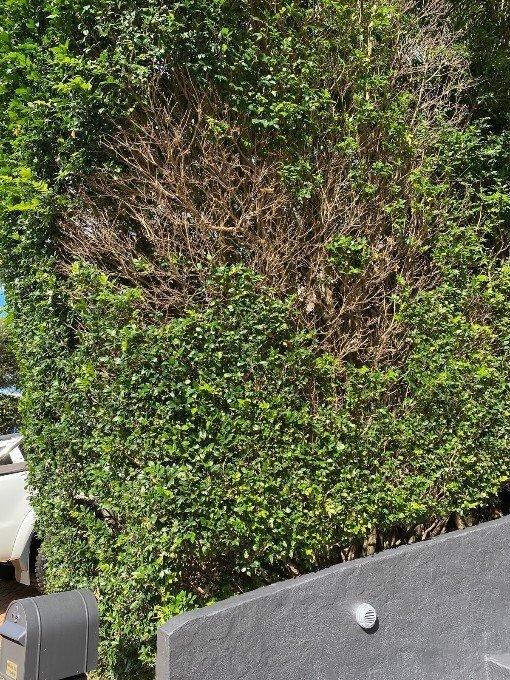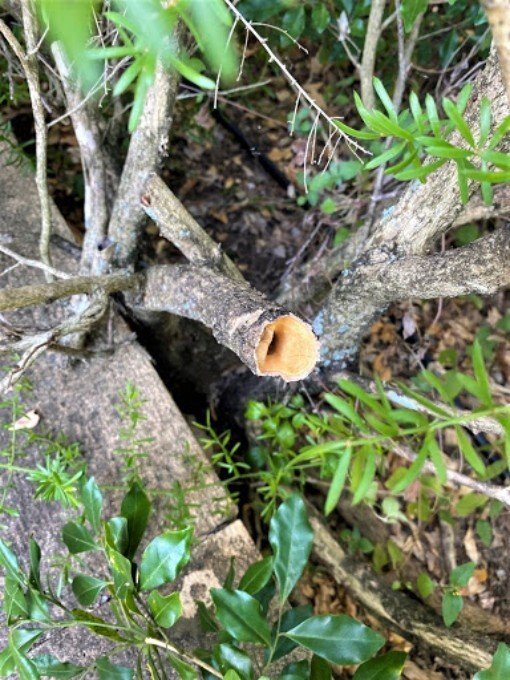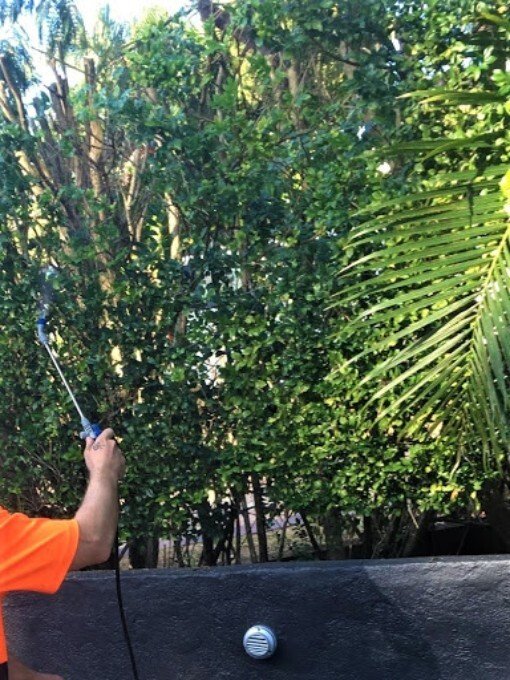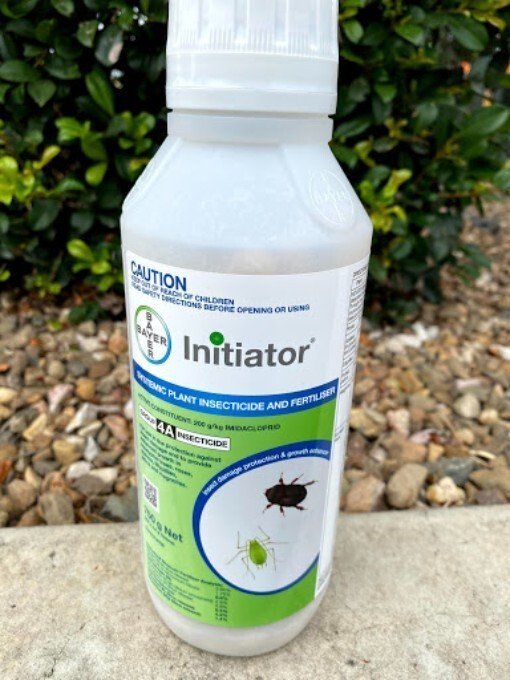Why is my Murraya Paniculata ( Mock Orange ) Hedge Turning Brown and Dying ?
Common problems for a Murraya Paniculata hedge include insufficient water, black spot/scale and nutrient deficiency. However if your hedge is otherwise quite healthy and you have noticed that sections of your hedge are dying off or turning brown, then the most common cause is you have borers. Tree borers are most easily identified by the tiny holes they cut into trunks.
Borer infestations are a headache. Not only do these insects threaten your hedge and make them look unsightly, but they can also potentially spread and severely damage shrubs beyond your own.
Although borers can be found in other species of hedges and shrubs, they are most commonly found in Murraya Paniculata hedges.
How to Revive a Dying Hedge
The great news is, this is a treatable problem.
At 1300 4 Gardening we have seen this many times and been treating this problem for customers for over 20 years.
We believe the best practice to rectify this issue is to ;
✓ Cut all dead, dry, or dying pieces back to the trunk
✓ Treat with Initiator slow release pellets and/or spray with Cocky 200 SC ✓ liquid mixed up as per specification sheet (MSDS Sheet)
✓ Fertilise (we recommend Eco88) to help plant recovery and regrowth
✓ Water daily after treatment and fertiliser after 2 weeks
So it’s great that you won’t lose the whole hedge. Unfortunately, it will take time for the hedge to recover and be back to looking it’s best. Depending on the area of Australia you live in and the current weather conditions, we would expect to see regrowth in 4 to 8 weeks with good cover about 6 months after the borer has been removed and treated.
We Accept








